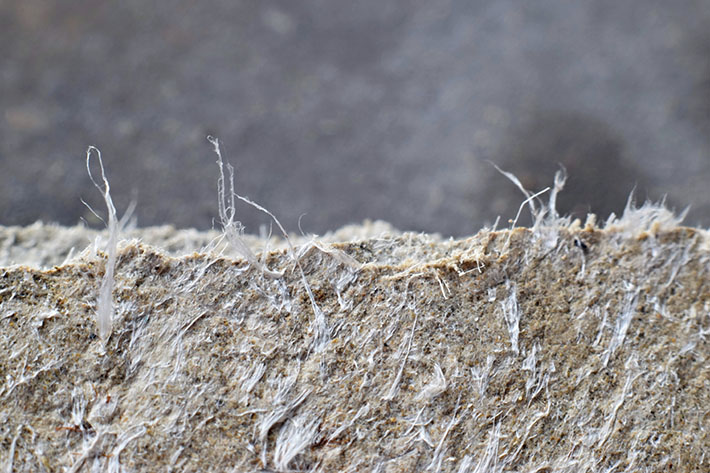
8 Standards for the Air We Breathe
Humanity’s concerns over the negative effects of air pollution have existed for centuries. In A.D. 61, the Roman statesman Seneca wrote about “the clouds of ashes and all the poisonous fumes” that filled the air of Rome, along with the problems they were causing to human health. In 1661, English historian John Evelyn wrote Fumifugium, begging King Charles II to ban the burning of sea coal in London, which choked the city’s air with acrid, black smoke. By the twentieth century, the effects of the Industrial Revolution were being felt around the world, leading to major new clean air laws in the U.S., U.K., and elsewhere.
It is this long and winding history of air-quality concerns that eventually led to the formation of ASTM International’s air quality committee (D22) in 1951. Originally tasked with managing standards “relating to the methodology for sampling and analysis of source emissions, ambient workplace and indoor atmospheres, and meteorological conditions,” today the committee oversees about 150 standards and nine technical subcommittees.
“Our committee name is air quality and that includes ambient air, workplace air, and indoor air,” explains Michael Brisson, technical advisor at the Savannah River National Laboratory and former D22 chair. “But it also includes measurements of potentially harmful substances such as asbestos, mold and other biologicals, and lead that can be in air or settle as dust on surfaces. So we have a broad array of test methods, practices, and guides for analysis of various types of air and air contaminants.”
READ MORE: Taking a Breather: Testing for Formaldehyde in Wood
D22 is also very active in education, hosting a variety of workshops, conferences, and symposia to share its learnings on detection limits, measurement of asbestos, respirable crystalline silica, and more, with a broad audience of industry stakeholders. As part of this effort, the subcommittee focused on sampling, analysis, and management of asbestos and other microscopic particles (D22.07) recently created a module for ASTM’s e-learning program that teaches users about its comprehensive asbestos survey standard, with plans to develop another asbestos-focused module in the near future.
As a longstanding committee, D22 has many important standards in its purview, but here are some of the most impactful, according to Brisson and his subcommittee chairs:
Standard test method for determination of total suspended particulate (TSP) hexavalent chromium in ambient air analyzed by ion chromatography (IC) and spectrophotometric measurements (D7614)
Hexavalent chromium is a known inhalation irritant associated with respiratory cancers and is created by a number of commercial and industrial sources, according to Brisson. It readily penetrates biological membranes and has been identified as an industrial toxic and cancer-causing substance. This standard sets the guidelines for testing emissions for hexavalent chromium to help support worker safety, he says.

Cancer-causing asbestos fibers like these can leave behind microscopic particles in living spaces. D5755 provides a sampling and analysis method.
Standard test method for determination of elements in airborne particulate matter by inductively coupled plasma–mass spectrometry (D7439)
“In the workplace,” Brisson says, “occupational exposure limits only go in one direction: down. So as they keep getting lower, we keep needing to have more sensitive test methods and standards for those methods.” D7439 addresses that need, covering the analysis of elements in airborne particulate matter, he says.
Standard guide for small-scale environmental chamber determinations of organic emissions from indoor materials/products (D5116)
Volatile organic compounds (VOCs) are gases emitted from certain solids and liquids, sometimes including chemicals that can have adverse health effects, Brisson explains. D5115 covers VOC screening techniques, testing methods, determines the effect of environmental variables on emission rates, ranks various products with respect to their emissions profiles, and more.
Standard test method for determination of formaldehyde and other carbonyl compounds in air (active sampler methodology) (D5197)
Formaldehyde is a naturally occurring organic compound used in a wide range of building materials, household products, and industrial applications. At high concentrations, Brisson says, it can be harmful, so D5197 sets testing standards for measuring formaldehyde and other carbonyl compounds in indoor, workplace, outdoor air, and for emission testing.
Standard test method for microvacuum sampling and indirect analysis of dust by transmission electron microscopy for asbestos structure number surface loading (D5755)
Asbestos is of great concern for indoor air quality given its cancer-causing properties. D5755 standardizes a microvacuum sampling and indirect analysis method for the general testing of non-airborne dust samples for asbestos. Brisson says the standard helps evaluate dust found on surfaces in buildings such as ceiling tiles, shelving, electrical components, duct work, and carpet.
Standard guide for assessment of fungal growth in buildings (D7338)
Fungus is another common indoor air-quality concern. Although there are many different variables that contribute to fungal and mold growth in buildings, this standard lays out options for a systematic assessment. Brisson says the guide is flexible, so site-specific variables and the professional judgement of the inspector can still play a role, but its ultimate goal is finding and mitigating any fungal growth in a structure that may be impacting indoor air quality.
Standard practice for quality Systems for Conducting In Situ Measurements of Lead Content in Paint or Other Coatings Using Field-Portable X-Ray Fluorescence (XRF) Devices (E2119)
The subcommittee on lead’s standards address the use of toxic lead in products and installations. E2219 lays out a way to measure the amount of lead in paints and other coatings using X-rays, Brisson explains.
Standard practice for clearance examinations following lead hazard reduction activities in single family dwellings, in individual units of multifamily dwellings, and in other child-occupied facilities (E3074/E3074M)
Another lead standard, E3074, oversees the clearance examination process. Brisson says that when a house has been remediated for lead contamination, inspectors need to go back and make sure the job was done effectively and the lead has been fully remediated. This standard establishes that process.
Looking ahead, D22 is turning its attention to a range of new standards, including those dealing with indoor air-quality concerns related to using spray polyurethane foams, asbestos in talcum powders, and biological remediation associated with mold and fungus. Meanwhile, the group’s meteorology subcommittee is working on a new standard for using ceilometers, devices that measure the height of a cloud ceiling or cloud base, as a way to determine the creation and distribution of ozone from precursors like VOCs and nitrous oxides.
The committee is also looking at standards for so-called “fenceline monitoring,” which is the measurement of ambient conditions at the “fenceline” of a facility. With smartphones allowing broad access to powerful air-quality monitoring tools, this is an emerging area of air quality control.
Tim Sprinkle is a freelance writer based in Colorado Springs, Colorado. He has written for Yahoo, The Street, and other websites.
U.N. Sustainable Development Goals Supported:


 SN Home
SN Home Archive
Archive Advertisers
Advertisers Masthead
Masthead RateCard
RateCard Subscribe
Subscribe Email Editor
Email Editor